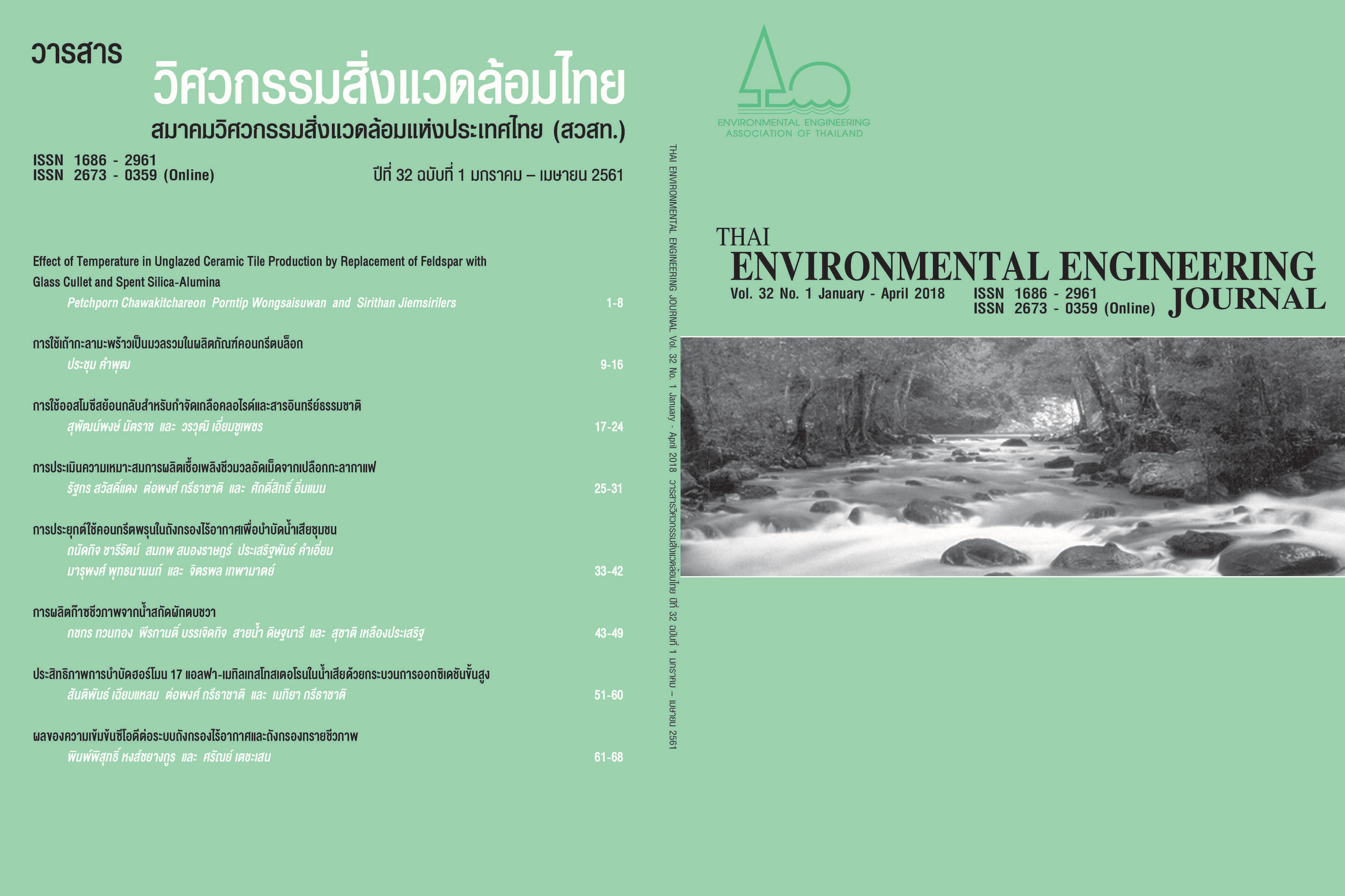Biogas Production from Water Hyacinth Extract
Main Article Content
Abstract
This study investigated gas production from Water Hyacinth Extracted by the anaerobic process. The substrate used in this study was water hyacinth extract and microorganisms came from cow dung in a semi-continuous single-stage operation. The 5 liter bioreactors were operated. Organic Loading Rates (OLRs) were 1.63, 2.29 and 2.94 kg COD/m3-day respectively, which corresponded to hydraulic retention time (HRT) of 10, 8 and 6 days. The experiments were performed at the temperature of 30oC. The initial biomass in all reactors was approximately 41,980 mg Mixed Liquor Suspended Solids per Liter. The maximum methane yield at STP (104.50 L/kg of COD degraded or 295.42 L/kg of TVS degraded) was observed at an OLR of 1.63 kg COD/m3-day. At this OLR and HRT, the efficiency removal of COD and TVS was 89.53% and 72.49%, respectively.
Article Details
References
[2] Prime Minister's Office (2557) Quantity of Water Hyacinth. [Online]. Source: http.//region2553.prd.go.th/prphayao/news. [4 March 2560] (in Thai)
[3] APHA, AWWA, and WEF. Standard Method for the Examination of Water and Wastewater, 20 ed Washington, D.C. 2005.
[4] Barua, V.B. and Kalamdhad, A.S. 2018. Anaerobic Biodegradability Test of Water Hyacinth after Microbial Pretreatment to Optimise the Ideal F/M ratio. Fuel, 217. 91-97.
[5] Savanon, S., Sangsri, S., Leugprasert, S. and Sinbuathong, N. 2017. Methane Production from Napier Grass by Co/digestion with Cow Dung. Energy Solutions to Combat Global Warming, Lecture Note in Energy, 33. 169-180.
[6] Sinbuathong, N., Sangsil, Y. and Leugprasert, S. 2016. Methane Production from Napier Grass by Two-stage Anaerobic Digester. International Journal of Global Warming, 10(4), 423-436.


